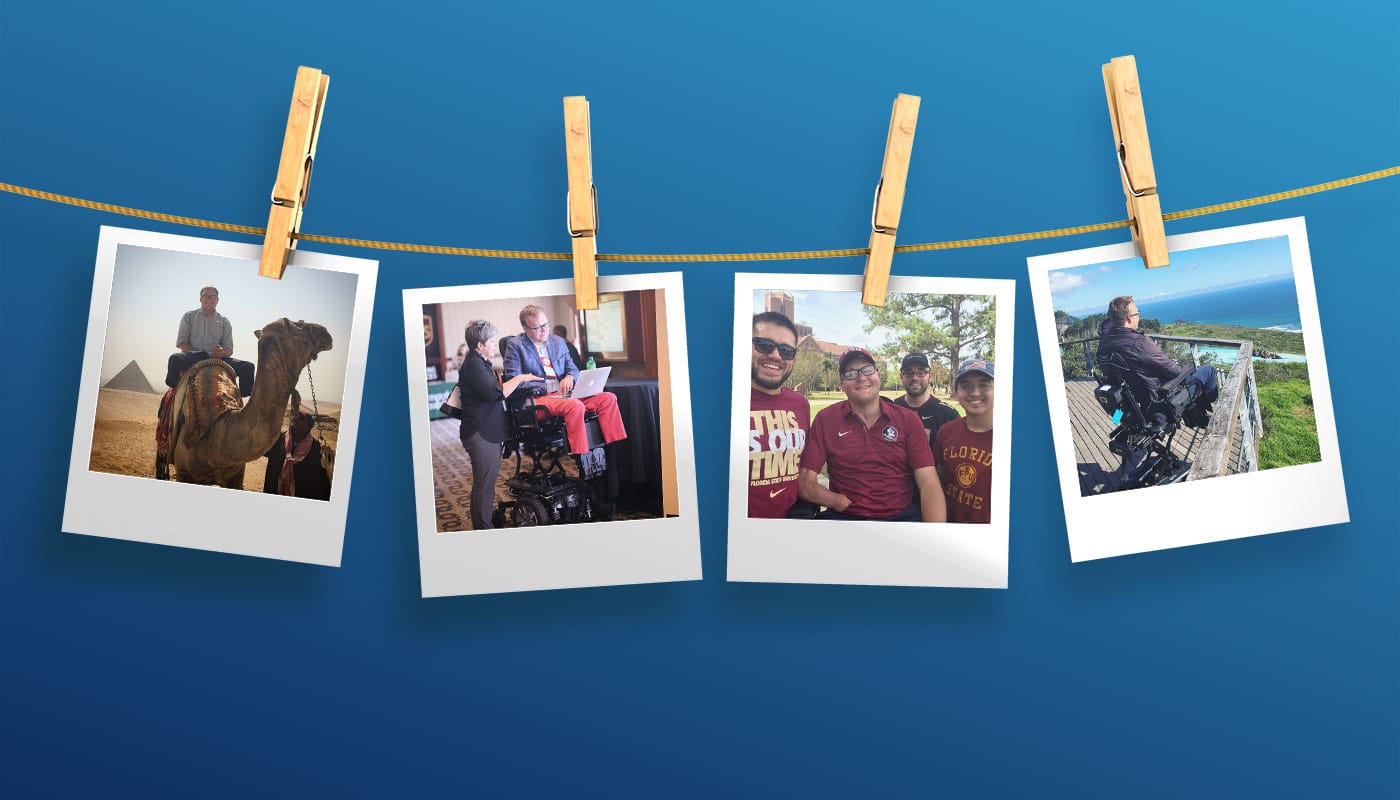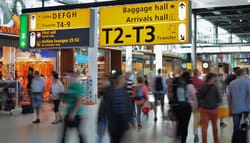As 2017 comes to a close and we prepare to raise our glasses to toast a new year, I present to you this obligatory “Year in Review” post. My accessible travel adventures took me to a new continent this year—Africa, and the amazing cities of Cairo, Egypt and Cape Town, South Africa. There were many highs—unforgettable moments, chance encounters and breathtaking experiences. Unfortunately, there were also some lows—ADA violations, damaged wheelchairs and discriminatory behavior that left me speechless.
Through it all, I kept my head up and remained focused on my dream of an accessible world. A world where everyone, regardless of physical ability, can experience all the best life has to offer… through travel! So, without further ado, here is a rundown of the best and worst aspects of accessible travel in 2017.
Airlines
People with disabilities—wheelchair users in particular—are often apprehensive about traveling by air. To help readers overcome those concerns, I have created the internet’s most detailed Guide to Air Travel with a Wheelchair. In 2017, I flew more than 200,000 miles and took well over 100 flights. My experiences were mixed. But two carriers really stood out this year for their consistency.
Best Airline of 2017: Qatar Airways
Qatar Airways didn’t earn my nod for their luxurious airplanes or airport lounges, but for their ability to listen and adjust practices in response to customer feedback. In 2017, I flew 48,534 miles (or 2 trips around the Earth) on Qatar Airways, touching 3 continents.
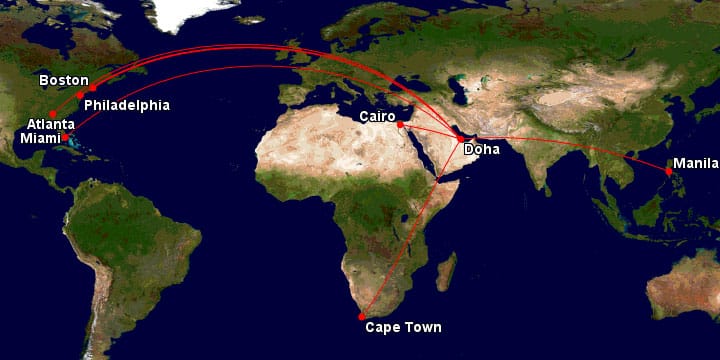
At first, the accessibility challenges were typical – delayed return of my power wheelchair, and damage too. After a few times spent waiting in excess of an hour for the return of my wheelchair, managers stepped in to ensure that the problem would not be repeated. They worked with me and airport authorities to ensure that my “legs” would be quickly retrieved on future flights. They were.
On the two occasions my wheelchair was damaged, the airline was quick to respond and reimbursed me for the repairs in a timely manner. They allowed me to have it addressed on my own schedule, rather than dealing with a third-party like other airlines require.
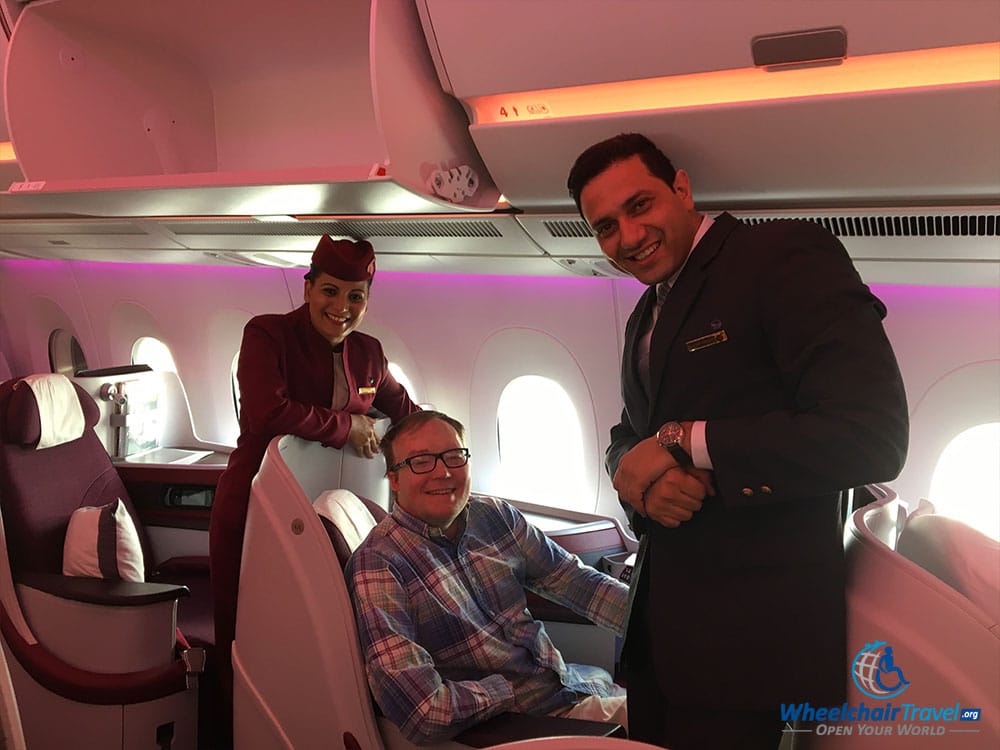
Qatar’s cabin crew are reliably pleasant and helpful, offering special attention regardless of which class of service I was flying. They are also well-versed in using the aisle chair, and responded quickly to my requests for assistance to the bathroom. With air travel being such a pain for wheelchair users, it was nice to finally find an airline that gives more than lip service to disability-related suggestions and complaints. It is no surprise, then, that Qatar Airways was named the world’s #1 airline by SkyTrax earlier this year.
Worst Airline of 2017: JetBlue
After my first-ever flight with JetBlue Airways in January of this year, I wrote a blog post praising their proactive customer service approach. I spoke too soon. Not a single one of my subsequent flights with the airline have been good.
Truth be told, I wanted to like JetBlue. Their staff is among the friendliest in the industry, they offer a great snack selection in economy class, permit free carry-on bags (unlike Spirit Airlines) and have a pretty attractive route network.
Unfortunately, they have repeatedly failed to return my gate-checked wheelchair inn a timely manner. Flight attendants never offer the FAA-mandated personalized flight safety briefing. And, to top this tragic ballad off, I was once made to sleep overnight in the Los Angeles airport after my flight left without me (they posted a 1-hour flight delay, then left on-time).
While not JetBlue’s fault, their partner airline Silver Airways once left me sitting in an aisle chair on the tarmac during a lightning storm (which resulted in a ground-stop). Orlando International Airport refused to release footage of that incident to me, citing security exemptions to public records requests. Sad! I suspect it would have been a viral video.
Hotels (ADA Compliance)
You’re either ADA compliant or you’re not. But how you respond to guest issues with non-compliance are important, and so I chose two hotels in Cleveland, Ohio to demonstrate the importance of accessibility. I’ll start with the worst, first…
Worst Hotel of 2017: Hampton Inn Cleveland Downtown
I was in Cleveland for a friend’s wedding and was a member of the wedding party. The best man handled our hotel reservation, and booked an accessible room for the two of us at Hampton Inn Cleveland Downtown. There was just one problem…
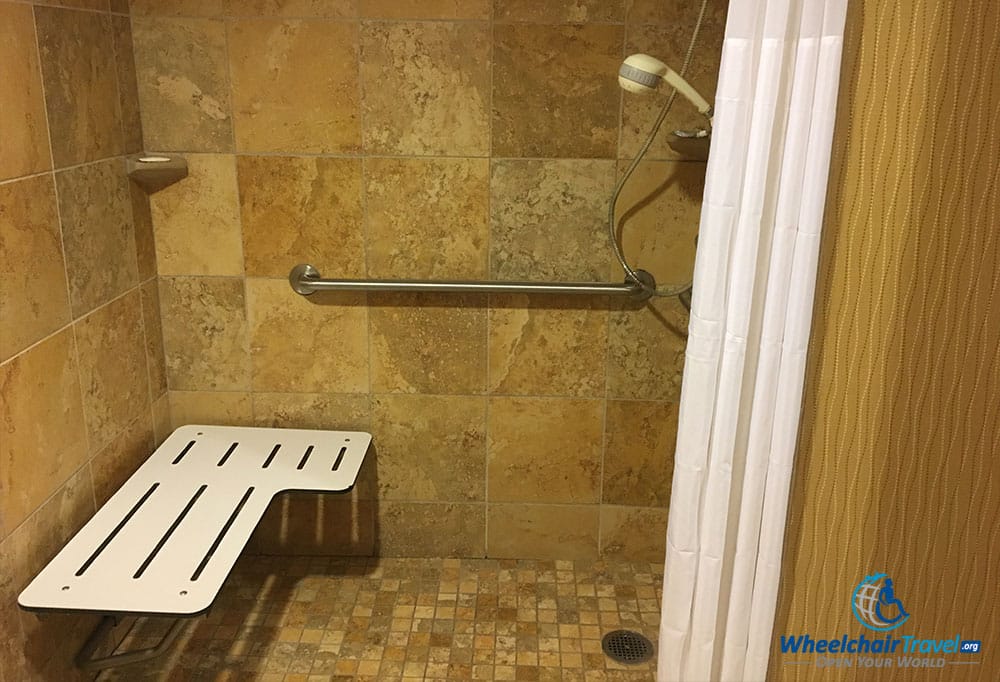
The room’s roll-in shower was not up to code, with the shower seat and handheld shower spray unit being on opposite walls (and thus out of reach). I see this all the time, so no big deal, I thought. The hotel would just send up a portable shower seat. “I’m sorry, that’s a liability,” said the General Manager. My request for a shower seat was refused.
With no other option and the GM refusing that any ADA violation had occurred, I split up from the rest of the wedding party and booked an accessible room at another hotel. After a protracted back-and-forth with Hilton corporate, my friend received a partial refund from the hotel, but the hotel has no plans to fix their illegal shower.
Best Hotel of 2017: The Westin Cleveland Downtown
Oh, Cleveland again? Unable to take a shower at the Hampton Inn and due to serve as a groomsman in a wedding, I booked a room at the Westin Cleveland Downtown. The property received high marks in my accessibility rating, and met all of the ADA requirements for an accessible shower.
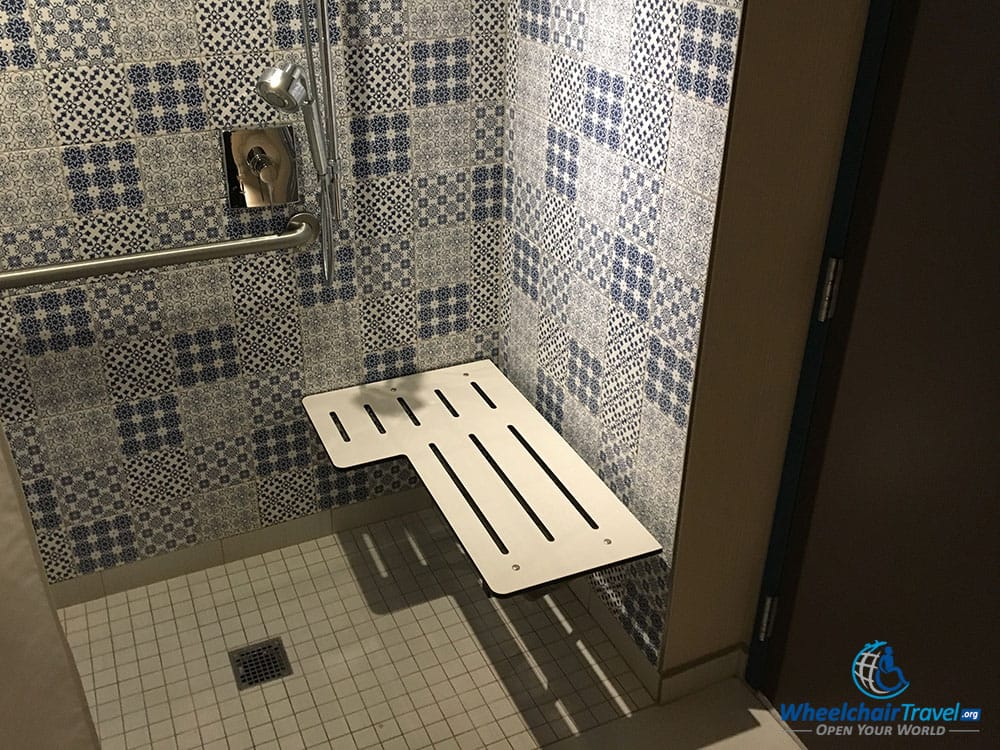
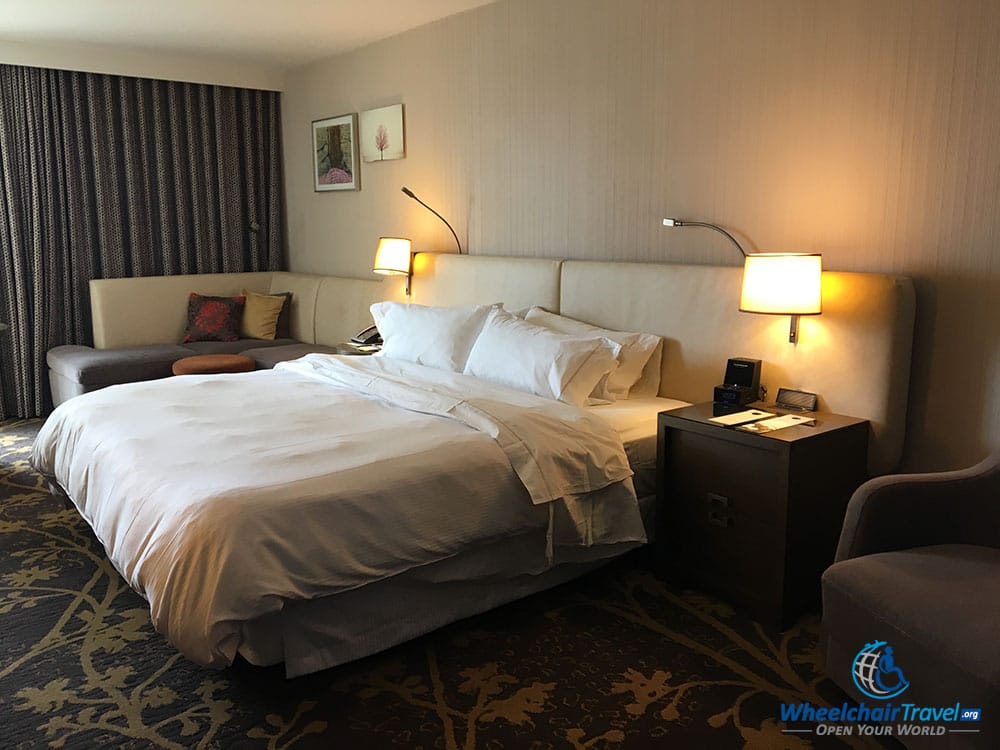
In addition to the ADA compliant roll-in shower, my guest room at the Westin Cleveland was spacious, the bed was lower than at the Hampton Inn, and the staff were exceedingly friendly. This was a breath of fresh air after a poor experience just down the street, and the Westin Cleveland will be my go-to property any time I am in the city.
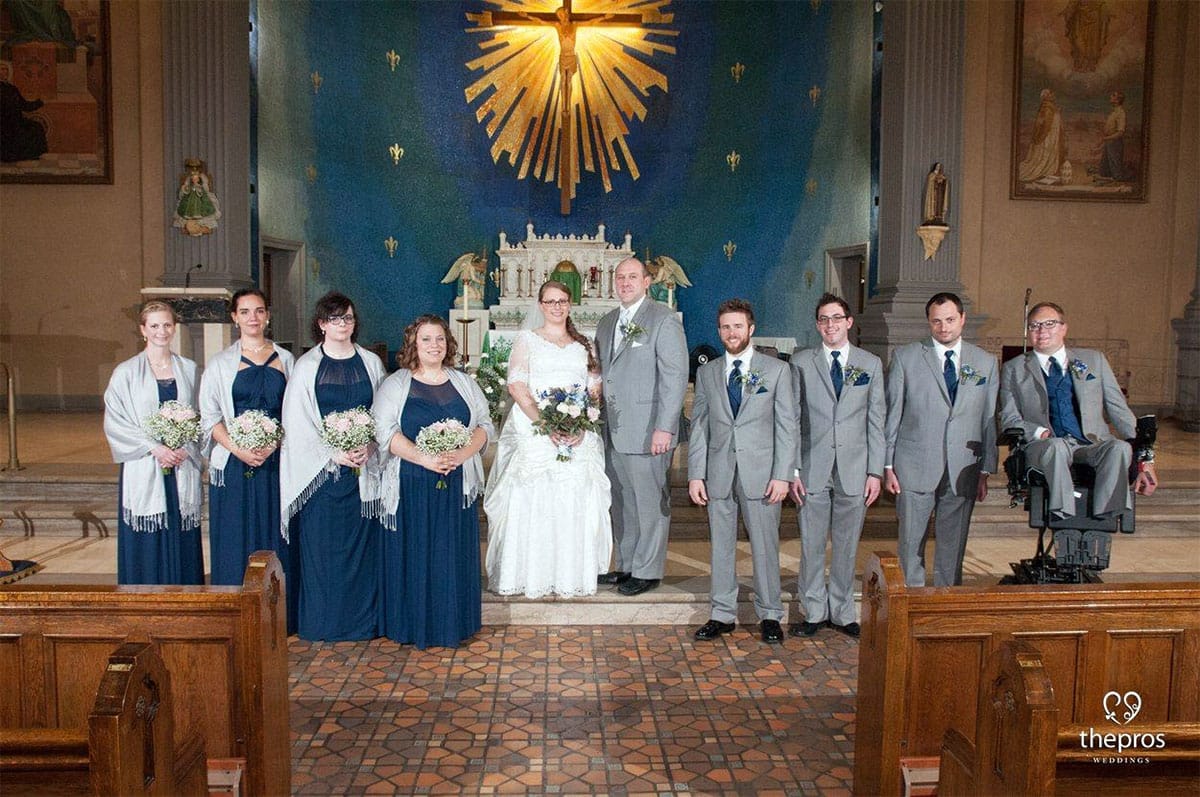
Most importantly, I was able to take a shower and clean up for my friend’s wedding, which was a smashing success! All the best to Paul and Michelle on their lives together.
Destinations
I visited a lot of new destinations in 2017, but didm’t write many new accessible travel guides. New travel guides for 2017 were: Cairo, Egypt; Cape Town, South Africa; Dallas, Texas; and Selma, Alabama. As you know, I don’t settle for anything less than a complete guide with accurate information, so the guides to other cities I’ve visited are on hold until I have the confidence to publish them.
Most Accessible Destination of 2017: London, U.K.
I don’t have a travel guide for London, England. It is a city that I have visited on five different occasions in the past two years (and connected through on flights countless other times), so I know all about the city’s level of access. In 2018, I will finally publish a London travel guide. It just hasn’t been high on my list of priorities, primarily because there are already great resources for accessible travel in the United Kingdom. Be sure to check out Simply Emma and The Bimblers, two really great blogs.

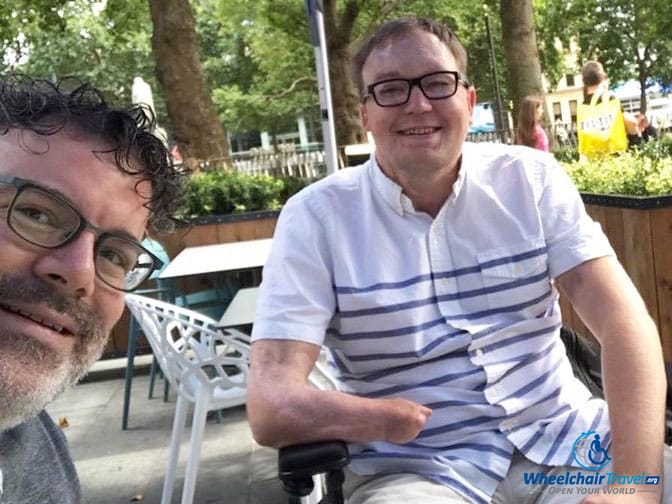
My 2017 trips to London (and one late 2016 trip that I’ll count with 2017) were a lot of fun, and allowed me to do some incredible stuff. I visited the movie studio where Harry Potter was filmed, rode a cable car across the River Thames and met up with good friends and accessibility advocates. I was also pleased to attend the World Travel Market this past November, which is the world’s largest travel industry event.
London is easy to get around using city buses and the tube (despite its limited access), and the quintessential black cabs are accessible to the majority of wheelchair users. The Heathrow Express provides accessible transportation from LHR airport to central London. Adapted hotel rooms are widely available. Most businesses are accessible, and tourist attractions certainly are. While locals rightly complain about issues with accessibility, London is actually quite open to tourists with disabilities and I always feel comfortable there.
Least Accessible Destination of 2017: Manila, Philippines
When I visited Manila last year, I had high hopes of experiencing all the city had to offer. Unfortunately, the offering was slim for wheelchair users, and I spent the majority of my stay holed up in the Hyatt City of Dreams hotel and casino.
The one bright spot was the Wheelmobile, the very first wheelchair accessible transport service in the Philippines. Despite having access to transportation, none of the things I wanted to do turned out to be accessible. So I spent my time relaxing at the resort, eating lots of food and trying my luck at the casino.
I did make it to Catholic Mass on Sunday, so that was a win.
The Philippines has a long way to go in creating an inclusive society. While I’m not too familiar with their domestic politics and whether there is a commitment to social services, it is always difficult to transform infrastructure in poorer countries. I hope, with the passage of time, the Philippines will become more friendly to the disabled.
Ground Transportation
The greatest structural barrier to disability inclusion is transportation. If you don’t live in a city with a public transit system, the world around you may be exceedingly difficult to access. The cost and unreliability of wheelchair taxis (if they exist at all) make getting around expensive and inconvenient. Ground transportation is the most important piece of the accessible travel puzzle, and it is an area that needs much attention.
Best of 2017: Mobilituk
In 2016, I introduced readers to an incredible innovation in Cambodia—Mobilituk, the world’s first wheelchair accessible tuk-tuk. Mobilituk is simple in design, but will have an unmeasurable impact on the lives (and mobility) of Cambodians with disabilities.
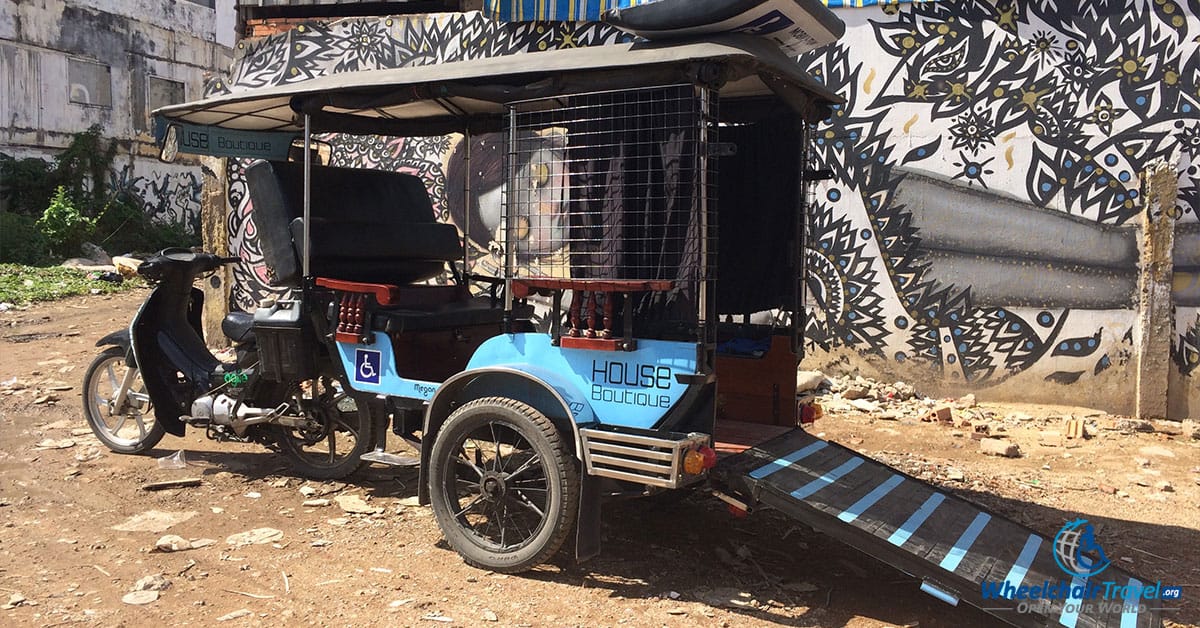
With one in every 290 Cambodians being an amputee, the country has the largest population of amputees in the world per capita. As a triple amputee myself, I am interested in making life easier and the world more accessible for amputees in Cambodia.
Mobilituk has just launched a fundraising drive to build and deploy 50 new accessible tuk-tuks throughout Cambodia. This will make it possible for so many people with disabilities to reach the medical and rehabilitative care they need. The Mobilituk will also increase disability participation in society, which would be a huge win for inclusion in Southeast Asia.
If you would like to support Mobilituk, contribute to their campaign on Generosity.
Worst of 2017: Hotel Shuttles
Earlier this week, I released an updated article on the ADA rules for hotel shuttle accessibility. Of all the ADA regulations that hotels violate, this is potentially the most common.
Complimentary shuttles are a great amenity for hotel guests, as they provide hassle-free transfers to the airport and/or nearby businesses and attractions. That is, they provide hassle-free transportation to able-bodied guests. Wheelchair users are often left behind, even though the ADA requires hotels to provide “equivalent service” to guests with disabilities in every respect.
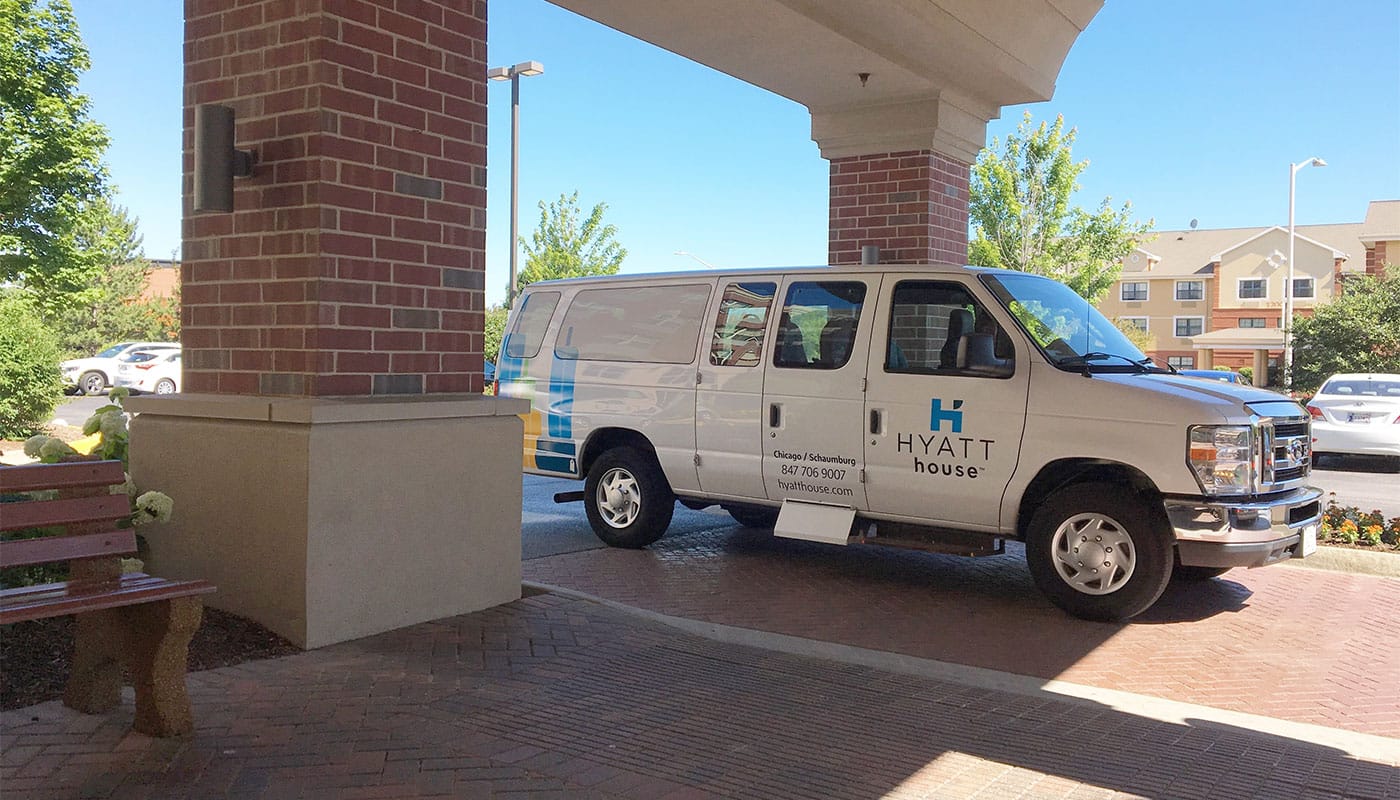
In 2017 alone, the lack of accessible hotel shuttles forced me to sleep in an airport (once), miss a flight (once), rebook at another hotel (twice), roll two miles uphill to catch a flight, and waste hours waiting for an accessible alternative to show up (countless times). Each of these were violations of the law.
This is an issue that I will continue to draw attention to, in the hopes that the government will act against the discriminatory behavior that amounts to a civil rights violation.
Adaptive Technology
While attending the Abilities Expo events in Chicago, San Francisco and Washington, D.C. last year, I was able to see a lot of great new adaptive technologies hit the market. One of them stands out and has been added to my own disability toolkit.
Best Adaptive Technology of 2017: Quantum iLevel
In 2017, I was fortunate to purchase a new wheelchair, selecting the Quantum Q6 Edge 2.0 with iLevel technology. Although iLevel has been around for awhile, the 2017 update included a full 12 inches of lift. This advanced technology gave me back something I lost in my car accident—height!
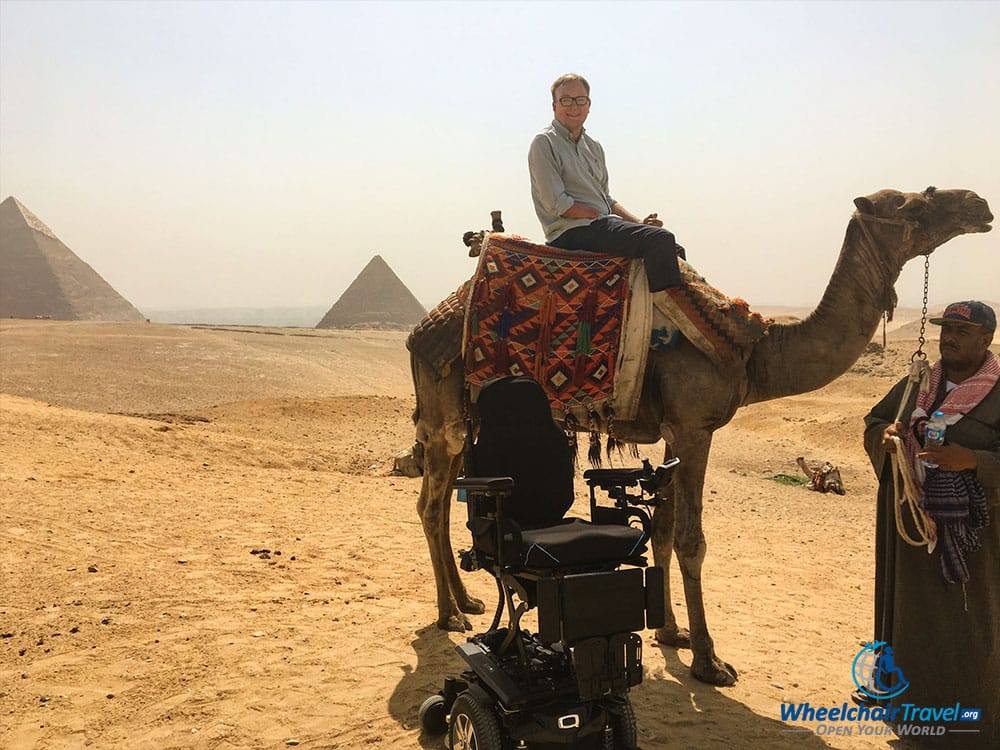
The benefits of iLevel extended far beyond the typical, such as reaching something on a high shelf. iLevel allowed me to capture experiences like the one pictured above, riding a camel around the pyramids of Egypt! I also took in the sights and sounds of travel from a new perspective, and even participated in a wedding.
My new Quantum wheelchair with iLevel technology has already traveled to four continents with me and will be an important part of my life for years to come.
Travel Loyalty Programs
I try to earn rewards points or airline miles on every purchase with credit cards and am a member of just about every loyalty program there is in the world of travel. I chase the best deals, earn points and spend my rewards currencies on free flights, bus rides, train tickets and hotel rooms.
Best Loyalty Program of 2017: American Airlines AAdvantage
As an Executive Platinum member in the American Airlines AAdvantage program, I receive a wide range of benefits including waived checked baggage fees, complimentary same-day flight changes and free upgrades to Main Cabin Extra and First Class.

I used my miles for many free flights in 2017, and was especially proud of two redemptions in particular. The first was 22,500 miles spent on a one-way economy class ticket from Cleveland to London. This was a last-minute purchase and saved me thousands of dollars. The second was a business class award on Qatar Airways from Cape Town to Orlando, Florida – 75,000 miles and about $50 in taxes allowed me to fly more than 20 hours in the world’s best business class.
Worst Loyalty Program of 2017: World of Hyatt
In 2010, the Department of Justice imposed fines on Hilton Hotels for a wide range of ADA violations, including an inaccessible reservations system and improperly designed hotel rooms. Replace Hilton’s name with Hyatt in that case, and you’d be good to go with a lawsuit against the Hyatt Hotels Corporation.
As a top-tier “Globalist” (formerly Diamond) member in the World of Hyatt loyalty program, I’ve stayed at a lot of Hyatt properties. Having also had experience with many other hotel brands, I believe that it is safe to say that Hyatt is worst when it comes to ADA compliance among major hotel chains in the United States.
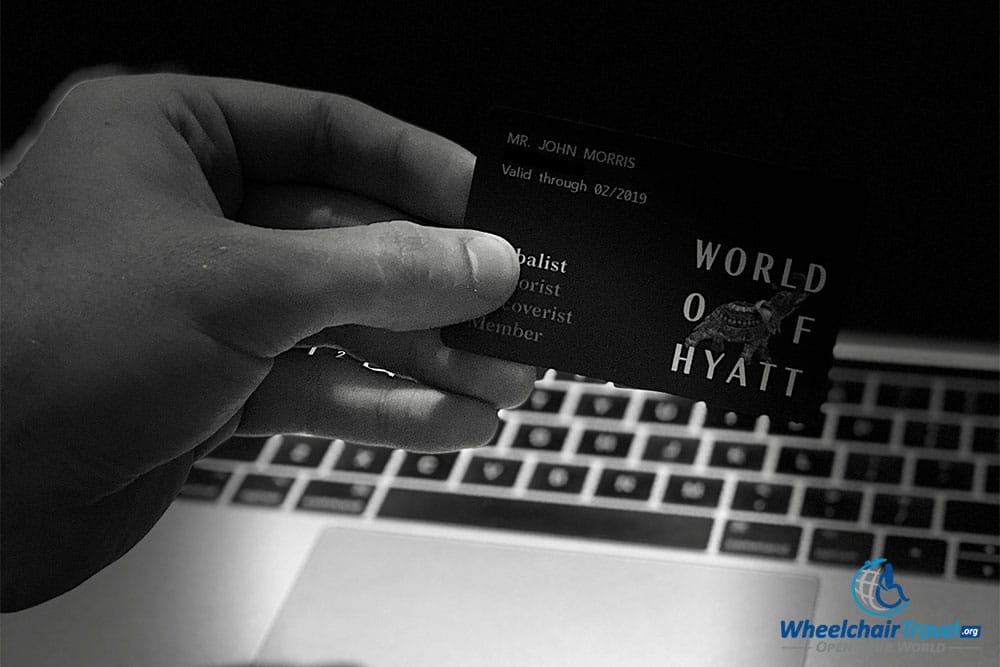
What’s wrong? For starters, “accessible” guest rooms are often in violation of the most basic ADA Standards for Accessible Design. Roll-in showers without a shower seat. Shower seats or benches placed on the wrong wall. Grab bars non-existent or placed in the wrong location.
Other issues include the lack of accessible hotel shuttles, information on accessible room types not being available through the website reservations system, hotels failing to honor ADA room reservations or overselling ADA room types, accessible rooms not dispersed among all room types, swimming pools with broken pool lifts, etc.
These issues tie-in to the World of Hyatt loyalty program in this way: My Globalist status entitles me to four confirmed suite upgrades per year. Unfortunately, very few Hyatt hotels have accessible suites (a violation of the ADA’s “dispersion” requirement), and the hotels that do have them don’t make that information available online. When calling, most staff are uninformed or provide incorrect information.
All of my suite upgrades have expired unused, with the exception of one (which I did not even use for myself directly). I reached out to Hyatt’s corporate leadership, hoping they would recognize the issue and commit themselves to doing the right thing (and following the law). Their new corporate slogan is “A world of understanding,” but, rather than living up to that marketing pitch, they’ve been totally uninterested in accommodating me (or complying with federal civil rights law).
Based on my loyalty in 2017, I have Globalist status for 2018. But, as things stand, I won’t be staying the 60 nights needed to maintain my status for the 2019 membership year. It’s a shame, but I won’t hand money to a company that has institutionalized (and defends) disability discrimination.
Top Articles of 2017
In closing, I’d like to share a list of the articles that gained the most traffic last year on WheelchairTravel.org. Double check to make sure you didn’t miss anything!
- 3 Ways Airplanes are Becoming Less Accessible — The passage of time generally means improvements in accessibility, but that’s not true in the air travel industry.
- Wheelchair Access on Cape Town’s Table Mountain — Ride the cable car to the top of South Africa’s most beautiful natural UNESCO World Heritage Site.
- 3 Civil Rights Lessons from Selma, Alabama — Reflections on my trip to historic Selma and crossing the Edmund Pettus Bridge in a wheelchair.
- Drinking, Power Wheelchairs and DUI — Can you be arrested for driving your wheelchair while under the influence? It depends on the state you live in, apparently.
- Exploring the Pyramids of Giza as a Wheelchair User — Yep, it’s possible… a triple amputee CAN ride around the Ancient Egyptian Pyramids on a wheelchair, or on a camel’s back!
- Review: Wheelchair Accessible Greyhound Bus Service — A detailed analysis of the benefits and drawbacks of riding Greyhound for the wheelchair user.
- Guest Post: Traveling in Alaska, Seward to Homer — Sandra Gail Lambert shares details of her exciting trip to Alaska, complete with orca whales, glaciers, boat rides and more.
- First Impressions of UberWAV in Washington, D.C. — Uber has finally launched a truly wheelchair accessible service! Here’s what I thought after giving it a go.
- Tour the Royal Palace of Madrid in a Wheelchair — No trip to Madrid is complete without a tour of this luxurious palace and monument to Spanish royal history.
- Cruising the Highways on Wheelchair Accessible Megabus — A quick introduction to the regional motor coach operator, which offers fares as low as $1!
2017 Travel Statistics
I take a lot of pride in being the wheelchair user who flies the most, but 2017 was light for me in the air travel department. Here are a few of my stats for the year.
- Total Flights: 112
- Number of Airports: 37
- Mileage Flown: 157,223 (6.3x around the Earth)
My top airline in miles flown was American, followed by Qatar Airways. I flew on 11 different carriers in 2017 (unusually low for me), including my first flights with EgyptAir and Etihad.
If 2018 is a strong travel year, I *might* be able to cross the threshold of 1,000,000 total miles flown as a wheelchair user (since my first flight in January 2014). I took my 500th flight in April, on Malaysia Airlines from Manila to Kuala Lumpur, and am only a handful of flights away from number 600.
I rode long-distance buses like Greyhound and Megabus 32 times in 2017, but usually on short routes.
Last year, I stayed in 68 different hotels across all of the major chains, including my first-ever stay at a LaQuinta Inn. In December 2017, I released the internet’s most comprehensive Guide to Accessibility in Hotels — check it out!
Happy New Year!
With 2017 in the books, I’m excited for what this New Year will hold. The world is becoming more accessible every day, and there is so much left to explore!
Thanks for spending 2017 with me, and I wish you all the best in 2018.
—John Morris

